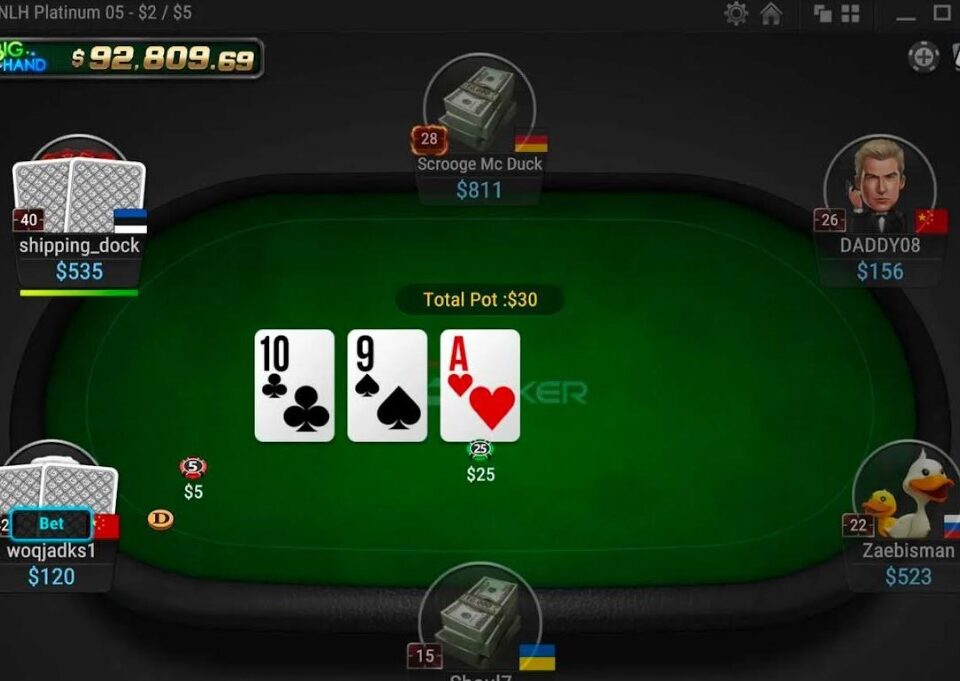Poker variance: what is it and what is it for?

In poker, variance is one of those complex terms that refer to an aspect linked to probability and that is difficult to explain without going too far into the field of mathematics. To give you an idea, some expert players have not even understood very well how variance works in poker or what is its real influence on the games.
Many players underestimate the power of variance in poker, and the truth is that its importance is paramount in predicting bad beats. It also involves other data such as the well-known winrate, the standard deviation or the number of hands played. But let’s go by parts.
What is variance in poker?
Although poker is a game in which the level of skill is fundamental, there are aspects that escape experience. To give you a rough idea of what variance in poker is, we will tell you that it is the fluctuation in the trend of the results, which can be predicted if you have enough mathematical background. As we were saying, the variance in poker is something that not even many professional players have known how to calculate, so we can tell you right away that it is not going to tell you everything it means.

Let’s start from the base: any poker player, including the highest-level ones, are exposed to suffer a bad streak of results. The index that measures this variation in the results is what is known as variance in poker, that is, the tendency of the results to be altered. Since it is understood that the alteration of a good result results in a bad one, it is understood that a high variance index may reflect the tendency to suffer a bad streak.
In poker, the variance is therefore the numerical index that quantifies the dissonance in the results to reflect the capacity of variation of the same, comparing the results that a player should have by tendency and the ones he is actually having.
To calculate the variance, it is necessary to take into account three fundamental data: the winrate (the win ratio), the standard deviation and the number of hands played. With these data in our possession, we can carry out the calculations that allow us to get an idea of the predictions in terms of results, including such relevant factors as the variance.
The variance in different poker modalities
Taking into account that variance in poker is an innate element that is always present and has implications in all types of modalities, the effectiveness of these calculations is disparate depending on the game modality, something that adds more confusion.
In multi-table tournaments, for example, it is especially complicated to know for sure the skill level of the player, as well as his level of variance. And the disparity of the data can make the arithmetic mean no longer consistent and, therefore, the concept of variance may not have all the implications that, for example, it does in other game modalities.

We are talking about handling probabilities with data that cannot provide exact information in a formula. It is a matter of knowing how to interpret and get an idea, not pure mathematics, so these estimates can be extremely volatile.
The variance in poker has an important impact when we talk about games with few players. In addition, having the ability to overcome bad streaks, the dreaded downswings, is almost as important as understanding how variance works in poker. We insist that here it is not worth anything to have accumulated experience and hours and hours of play: all players are exposed to bad results, and experience also serves to understand the fact that a bad streak can happen to anyone.
In online spins, for example, things are different. In this modality it is possible to calculate the variance more easily without the use of calculation programs. Although it is usually best to leave the complex calculations in the hands of these machines to reduce the probability of error, in spins you can obtain fairly reliable results without them.
The simulations usually always use the same practical example: with a player accumulating a total of 10,000 spins and having a win rate of 35%, the results show that players above the expected value would always be well above, but those below would not stray too far from this value. In other words, there would not be a polarization of results, as is the case with other modalities, where the results may not be as radical. In other words, the potential disadvantages would not be as great as the benefits that could be obtained if victory were achieved.



